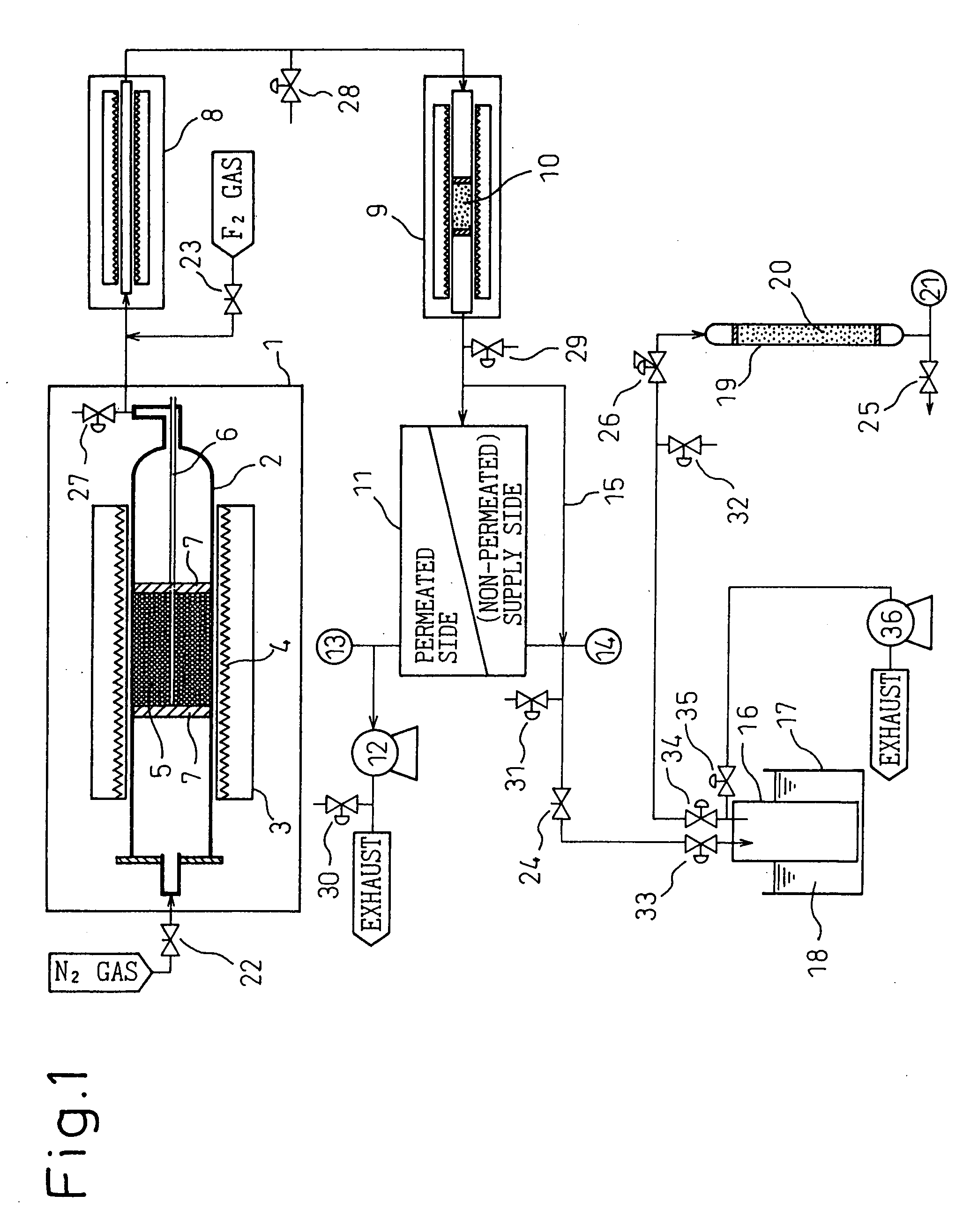Production and use of tetrafluorosilane
a technology of tetrafluorosilane and production process, which is applied in the field of tetrafluorosilane production process, can solve the problems of water production, adversely affecting the characteristics of a semiconductor or fiber, and inability to bring out initial adsorption capacity in some cases
- Summary
- Abstract
- Description
- Claims
- Application Information
AI Technical Summary
Benefits of technology
Problems solved by technology
Method used
Image
Examples
example 2
[0084] SiF.sub.4 gas was generated in the same manner as in Example 1 except that the dry sodium hexafluorosilicate crystal used in Example 1 was pulverized by a pulverizer and the obtained powder having a particle size of about 1 .mu.m was filled in the decomposition reaction tube 2. The gas generated was sampled from the valve 27 and the concentrations of impurity gases were analyzed. The results are shown in Table 1. From the results, it is seen that the (SiF.sub.3).sub.2O concentration was reduced when pulverization was performed.
example 3
[0085] The SiF.sub.4 gas generated in Example 2 was introduced in an F.sub.2 reactor 8 (construction material of reaction tube: nickel, inner diameter: 8 mm, length: 1,000 mm) shown in FIG. 1, 3 ml of 100% fluorine gas was mixed through the valve 23, and (SiF.sub.3).sub.2O contained in SiF.sub.4 was reacted with F.sub.2 at 300.degree. C. The gas generated was sampled from the valve 28 and analyzed. The values obtained are shown in Table 1. From the results, it is seen that the (SiF.sub.3).sub.2O concentration was reduced to less than 0.1 vol ppm.
example 4
[0086] Into a reaction tube (construction material: nickel) of a reactor 9 shown in FIG. 1, 60 ml of silicon chips having a size of 8 to 10 mesh were filled and treated at 500.degree. C. for 3 hours while flowing N.sub.2 gas (dew point: -70.degree. C. or less) at 300 ml / min. Then, the reaction tube filled with silicon chips was kept at a temperature of 150.degree. C. and the gas obtained in Example 3 was introduced thereinto to react excess F.sub.2 gas and silicon. The gas generated was sampled from the valve 29 and analyzed. The values obtained are shown in Table 1. From the results, it is seen that the fluorine gas concentration was decreased to less than 0.1 vol ppm.
PUM
| Property | Measurement | Unit |
|---|---|---|
| temperature | aaaaa | aaaaa |
| temperature | aaaaa | aaaaa |
| temperature | aaaaa | aaaaa |
Abstract
Description
Claims
Application Information
 Login to View More
Login to View More - R&D
- Intellectual Property
- Life Sciences
- Materials
- Tech Scout
- Unparalleled Data Quality
- Higher Quality Content
- 60% Fewer Hallucinations
Browse by: Latest US Patents, China's latest patents, Technical Efficacy Thesaurus, Application Domain, Technology Topic, Popular Technical Reports.
© 2025 PatSnap. All rights reserved.Legal|Privacy policy|Modern Slavery Act Transparency Statement|Sitemap|About US| Contact US: help@patsnap.com

